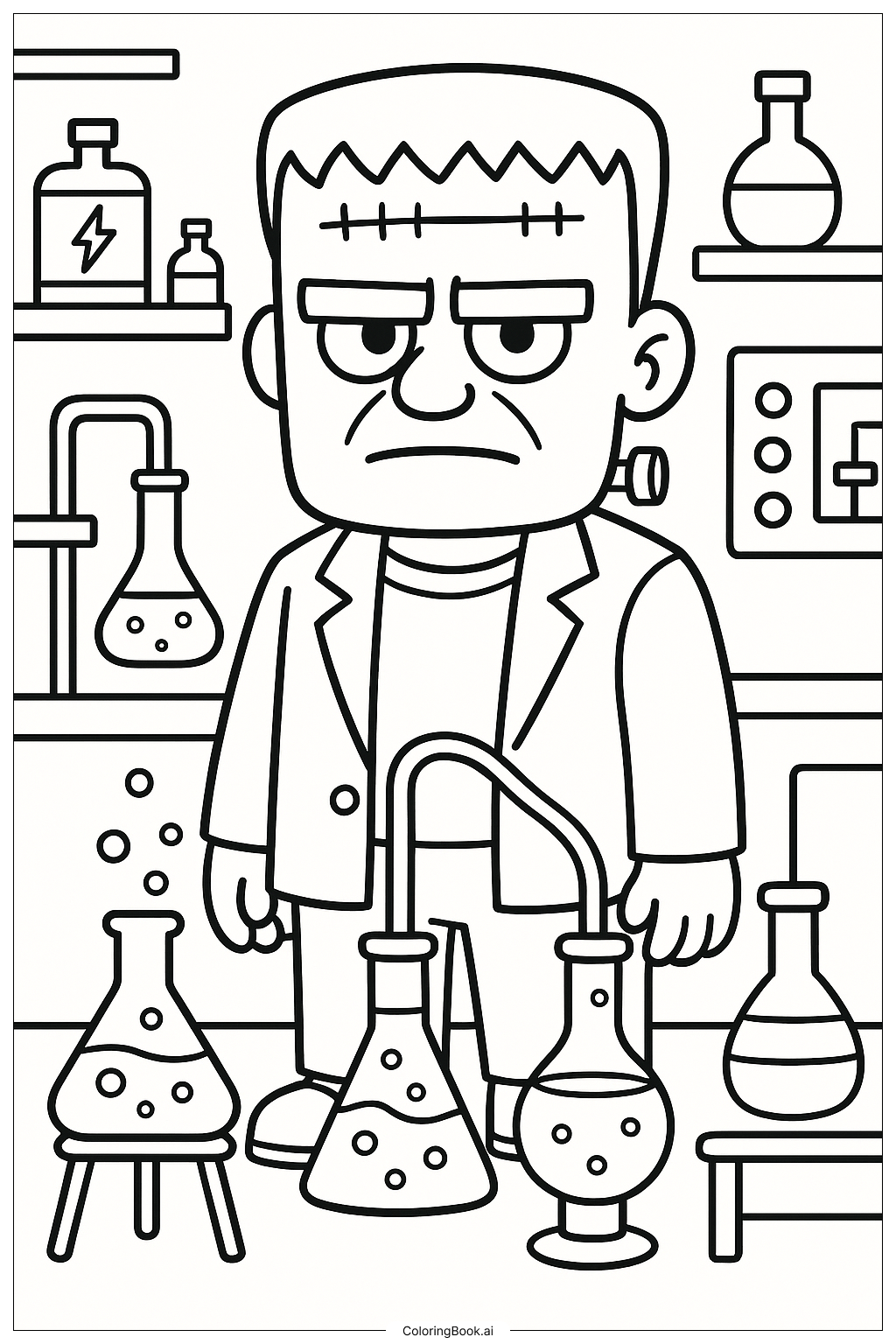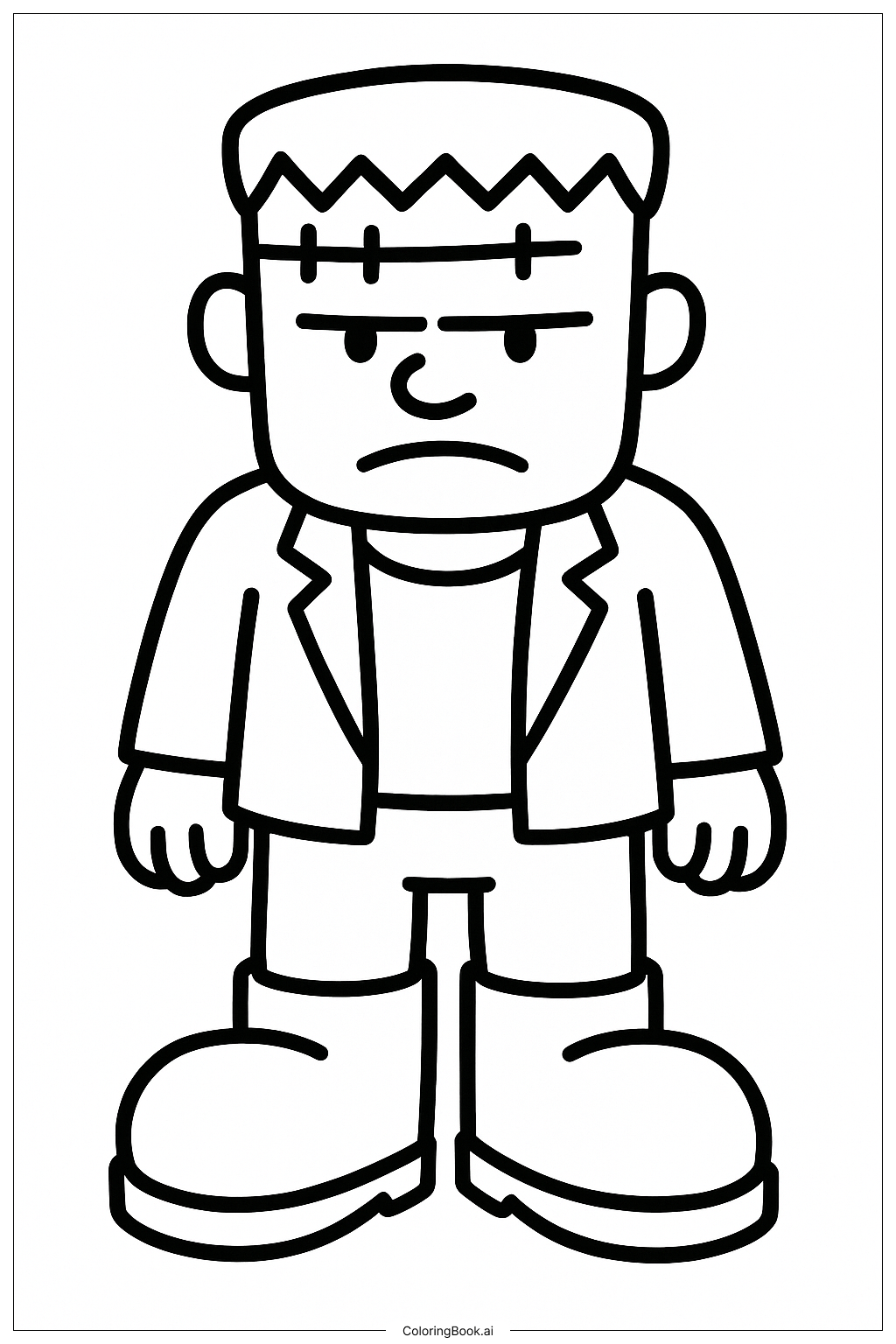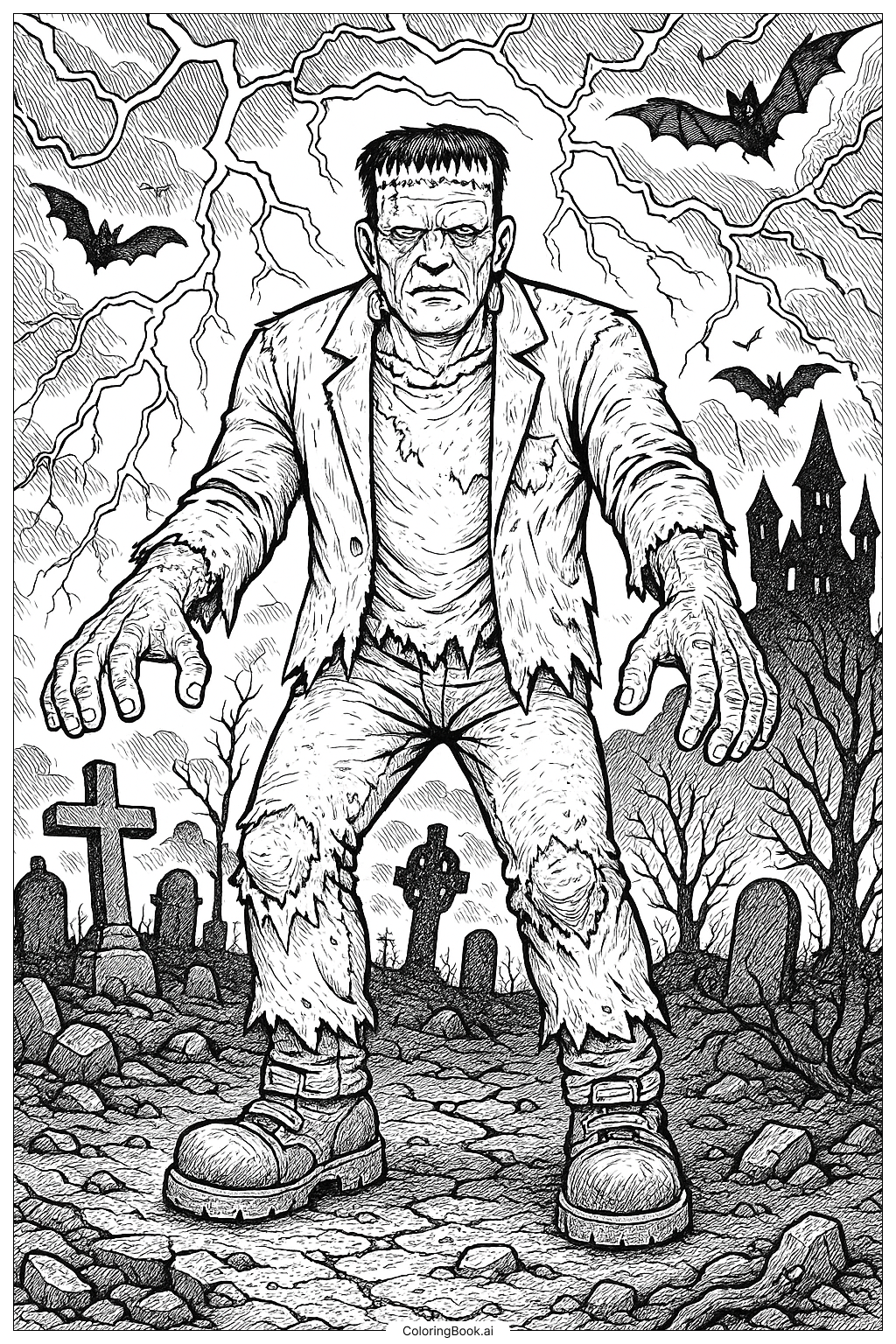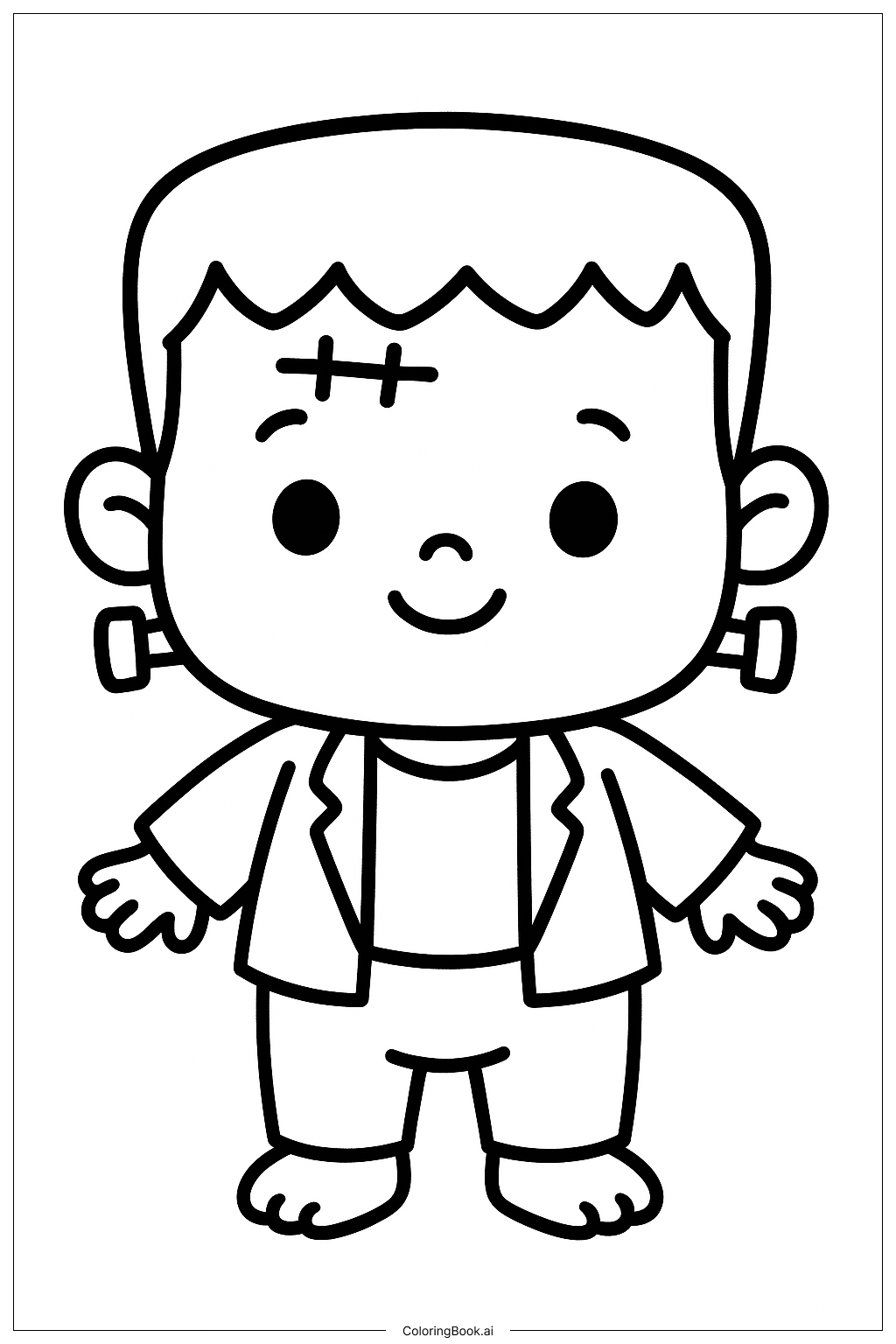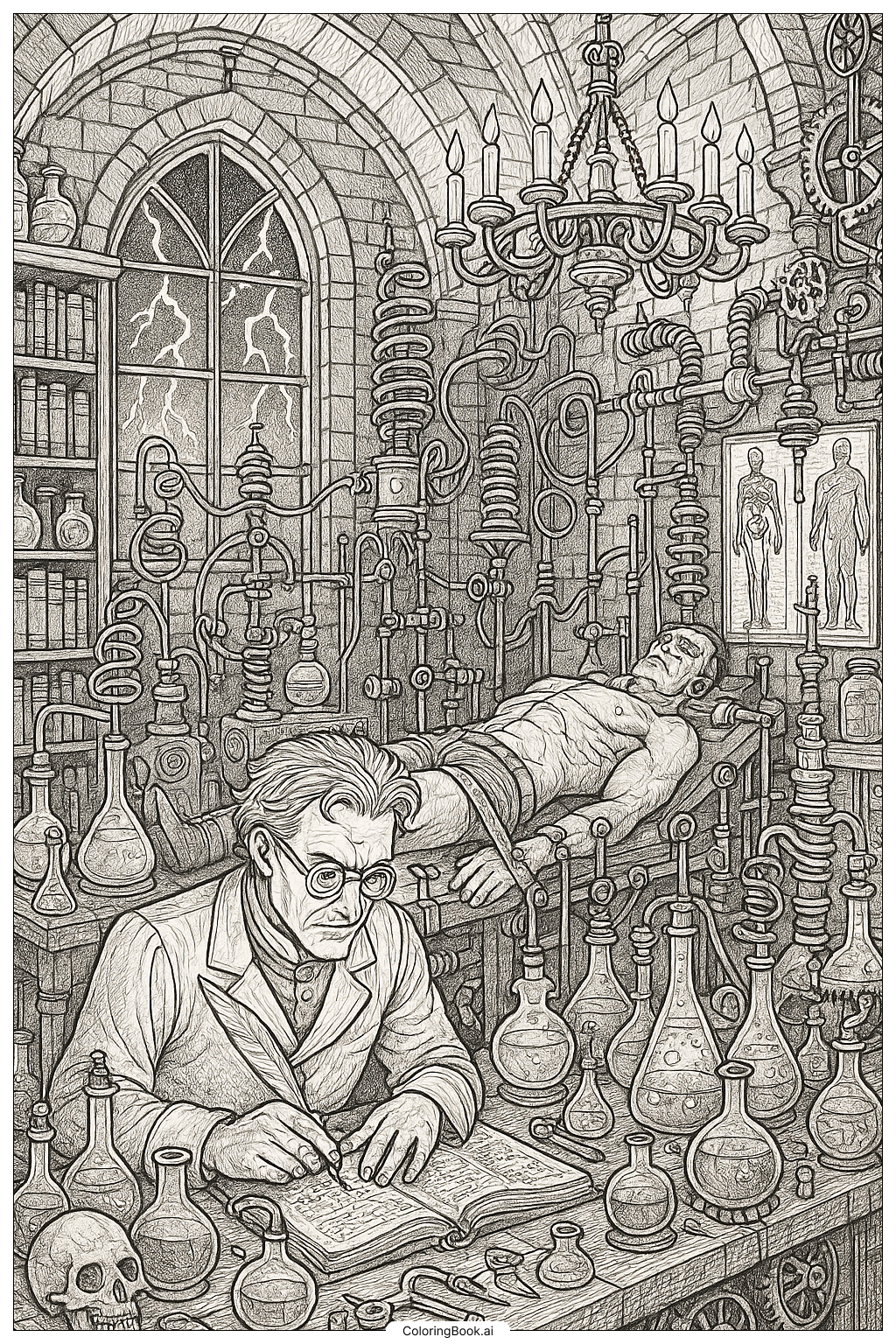Coloring tips: How to color Frankenstein In His Laboratory coloring page well?
For coloring, you can make Frankenstein green with dark hair to match the classic look. Use white or light gray for his lab coat. Try bright colors like blue, red, or yellow for the bottles and liquids inside the flasks to make them stand out. The bubbles can be colored light blue or white for a foamy effect. The shelves and machines can be gray or brown shades. Don’t forget to color the background with soft colors like light blue or light gray to keep the focus on Frankenstein and the lab equipment.
Coloring challenges: Which parts are difficult to color and need attention for Frankenstein In His Laboratory coloring page?
1. Frankenstein's face has many lines and shapes for the eyes, mouth, and stitches, which need careful coloring to stay inside the lines.
2. The small bubbles inside the flasks and beakers are tiny and might be hard to color without going outside the lines.
3. The lab coat overlaps with Frankenstein's arms and body, requiring attention to keep colors distinct between them.
4. The different shapes of lab equipment need different colors, which may be tricky to choose harmoniously.
5. The background contains many details like shelves and machines that can be overwhelming to color evenly without making it too busy.
Benefits of coloring books: Advantages of drawing Frankenstein In His Laboratory coloring page
Coloring this image helps develop fine motor skills by practicing staying inside small and detailed areas. It encourages creativity while choosing colors for Frankenstein and his lab tools. Children can also improve focus and patience by carefully coloring the different sections. Additionally, it introduces basic science concepts by showcasing a laboratory setting, making learning fun and engaging.
